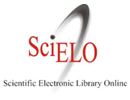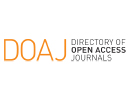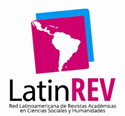Pseudosciences: A new threat to the secular humanist project
DOI:
https://doi.org/10.21142/DES-1502-2023-0026Keywords:
pseudoscience, science, religious fundamentalism, secular humanismAbstract
Historically, secular humanism has been in conflict with religious thought in the academic and social spheres. This article supports the thesis that in modern times pseudosciences and pseudoscientific thinking are a threat to the humanist project, comparable to religious fundamentalism. To prove it, the concept of Secular Humanism and how it is threatened by religious fundamentalism is explained. This is followed by the definition of what pseudosciences are and what pseudoscientific thinking is. Subsequently, the way how pseudosciences threaten the secular humanist project is described. The conclusion states that pseudoscientific thought and religious fundamentalism are equally dangerous for social coexistence.
Downloads
References
American Humanist Association. (2020). Introduction to humanism. https://americanhumanistcenterforeducation.org/free-courses/introduction-to-humanism/
Andrade, G. (2013). El posmodernismo ¡vaya timo! Laetoli.
Bajoria, J. (9 de abril de 2020). «Shoot the Traitors». Discrimination against Muslims under India’s New Citizenship Policy. Human Rights Watch. https://www.hrw.org/report/2020/04/09/shoot-traitors/discrimination-against-muslims-under-indias-new-citizenship-policy
Bakalar, N. (27 de junio de 2016). The Alternative Medical Bill: $30.2 Billion. The New York Times, https://www.nytimes.com/2016/06/28/health/alternative-complementary-medicine-costs.html
Barciela, F. (27 de octubre de 2018). Así es el negocio multimillonario de la homeopatía en el mundo que pincha en España. El País. https://elpais.com/economia/2018/10/26/actualidad/1540569452_141835.html
Bennett, B. (1982). Secular Humanism: America’s most dangerous religion. Humanist, 42(2), 42-45.
Berlinski, D. (2009). The Devil’s delusion. Basic Books.
Boas, M. (1962). The scientific Renaissance 1450-1630. Harper & Brother.
Bower, M. (2007). Secular Humanism. The official religion of the United States of America. America Star Books.
Bullard, G. (22 de abril de 2016). The world’s newest major religion: No religion. National Geographic. https://www.nationalgeographic.com/news/2016/04/160422-atheism-agnostic-secular-nones-rising-religion/
Bunge, M. (1994). Counter-Enlightenment in contemporary social studies. En T. A. Humanism, Challenges to the Enlightenment. In defense of reason and science (pp. 25-42). Prometheus Books.
Bunge, M. (2002). Crisis y reconstrucción de la filosofía. Gedisa.
Bunge, M. (2004). La investigación científica: su estrategia y filosofía. Siglo XXI.
Bunge, M. (2006). A la caza de la realidad. Gedisa.
Bunge, M. (2011). Prólogo. En G. Andrade, Las pseudociencias ¡vaya timo! Laetoli.
Chandrasekhar, A. (27 de abril de 2020). Alternative medicine no longer an ‘outsider’ in Switzerland’s health system. Swissinfo. https://www.swissinfo.ch/eng/going-mainstream_alternative-medicine-no-longer-an--outsider--in-switzerland-s-health-system/45706024
Confucio. (2014). Analectas. EDAF.
Cowden, S. y Sahgal, G. (2017). Why fundamentalism? Feminist Dissent(2), 7-38. https://doi.org/10.31273/fd.n2.2017.35
Crease, R. P. y Mann, C. C. (1990). The Yogi and the Quantum. En P. Grim, Philosophy of science and the occult (pp. 302-314). State University of New York Press.
David, M. (21 de junio de 2016). Where major religious groups stand on abortion. Pew Research Center. https://www.pewresearch.org/fact-tank/2016/06/21/where-major-religious-groups-stand-on-abortion/
Drake-Brockman, T. (2012). Christian Humanism: The compassionate theology of a Jew called Jesus. Tom Drake-Brockman.
Durant, J. R. (1993). What is scientific literacy? En J. R. Durant y G. Jane (eds.), Science and culture in Europe (pp. 129-137). Science Museum.
Edwords, F. (1989). What is Humanism? American Humanist Association. https://web.archive.org/web/20100130233229/http:/www.americanhumanist.org/who_we_are/about_humanism/What_is_Humanism
Fagan, G. G. y Feder, K. L. (2006). Crusading against straw men: an alternative view of alternative archaeologies: response to Holtorf. World Archaelogy, 38(4), 718-729.
Fasce, A. (2017). Los parásitos de la ciencia. Revista de Teoría, Historia y Fundamentos de la Ciencia, 347-365.
García-Belaunde, V., Jaimes, F. y López, F. (2023). Diseño y validación de la escala de pensamiento pseudocientífico. Desde el Sur, 15(1), e0010. https://doi.org/10.21142/DES-1501-2023-0010
Gayozzo, P. (2020). Pandemia: Coronavirus y virus mentales. Instituto de Extrapolítica y Transhumanismo, 3(1). https://doi.org/10.52749/iet.v3i1.31
Gayozzo, P. (26 de marzo de 2021). Pseudociencia y política: un cóctel mortal. https://pensar.org/2021/03/pseudociencia-y-politica-un-coctel-mortal/
Gayozzo, P. (2021). Virus mentales. https://pensar.org/2021/03/virus-mentales/
Gillipsie, C. C. (2004). Science and polity in France: The end of the Old Regime. Princeton University Press.
Gobierno de México. (2020). Hospital Nacional Homeopático. http://www.hnh.salud.gob.mx/
González, M. E. (2019). El psicoanálisis en planes de estudiode carreras de grado de Psicología en Argentina (2000-2012). Enseñanza e Investigación en Psicología, 2(1), 97-108. https://www.revistacneip.org/index.php/cneip/article/view/93
Goodman, L. E. (2003). Islamic Humanism. Oxford University Press.
Grove, J. W. (1985). Rationality at risk: Science against pseudoscience. Minerva, 23, 216-240.
Guinness, O. (1973). The dust of death: A critique of the establishment and the counter culture and the proposal for a third way. Intervarsity.
Hansson, S. O. (2013). Defining pseudoscience and science. En M. Pigliucci y M. Boudry, Philosophy of Pseudoscience (pp. 61-77). The University of Chicago Press.
Hansson, S. O. (2017). Science denial as a form of pseudoscience. Studies in History and Philosophy of Science Part A, 63, 39-47. https://doi.org/10.1016/j.shpsa.2017.05.002
Hawking, S. y Mlodinow, L. (2010). The Grand Design. Bantam Books.
Helmenstine, A. (23 de abril de 2018). The basics of physics in scientific study. https://www.thoughtco.com/physics-basics-4140295
History. (2012). Enlightenment and Revolution. Charlotte Country Public School: https://www.yourcharlotteschools.net/site/handlers/filedownload.ashx?moduleinstanceid=30762&dataid=33379&FileName=Module%2012.pdf
Hotez, P. J. (2021). Anti-science kills: From Soviet embrace of pseudoscience to accelerated attacks on US biomedicine. Plos Biology, 19(1). https://doi.org/ 10.1371/journal.pbio.3001068
Humanists International. (2019). End Blasphemy Laws. https://end-blasphemy-laws.org/countries/
Humanists International. (2020). The Freedom of Thought Report 2020. Humanists International.
Hurd, P. D. (1958). Science literacy: its meaning for American schools. Educational Leadership, 13-16. http://edcipr.com/wp-content/uploads/2016/09/Hurd_1958_Science-literacy.pdf
ILGA World. (2020). State-Sponsored Homophobia 2020: Global Legislation Overview Update. ILGA.
Institute for Humanist Studies. (2007). Definitions of humanism. https://web.archive.org/web/20070118050402/http:/humaniststudies.org/humphil.html
Instituto Nacional de Salud. (2020). Medicina Alternativa Complementaria MAC. https://web.ins.gob.pe/es/salud-intercultural/medicina-alternativa-complementaria-MAC
International Humanists. (2002). The Amsterdam Declaration. https://humanists.international/what-is-humanism/the-amsterdam-declaration/?lang=es
Israel, J. I. (2001). Radical Enlightenment. Philosophy of Modernity 1650-1750. Oxford University Press.
Jaimes, F. (2020). Pseudociencias: Una manifestación del pensamiento errado. https://extrapolitica.ssh.org.pe/wp-content/uploads/2020/09/Jaimes-Freddy-2020-Pseudociencia-Una-manifestación-del-pensamiento-errado-IET.pdf
Jenkins, D. y Johnston, L. B. (2004). Unethical treatment of gay and lesbian people with conversion therapy. Families in Society: The Journal of Contemporary Social Services, 85(4), 557-561. https://doi.org/10.1177/104438940408500414
Jenkins, E. W. (1994). Scientific Literacy. En T. Husen y T. Postlethwaite, The International Encyclopedia of Education (vol. 9, pp. 5345-5350). Pergamon Press.
Johnson, P. (2007). The Renaissance: A short history. Random House Publishing Group.
Johnson, S. B., Park, H. S., Gross, P. C. y Yu, J. B. (2018). Use of alternative medicine for cancer and its impact on survival. Journal of the National Cancer Institute, 110(01), 121-124.
Johnson, S., Park, H. S., Gross, C. y Yu, J. B. (Noviembre de 2018). Complementary medicine, refusal of conventional cancer therapy, and survival among patients with curable cancers. JAMA Oncology, 102(3), E399-E400.
Kitcher, P. (1984). Abusing science. The case against creationism. MIT Press.
Klingorová, K. y Havlíček, T. (2015). Religion and gender inequality: The status of women in the societies of world religions. Moravian Geographical Reports, 23(2), 2-11. https://doi.org/10.1515/mgr-2015-0006
Kurtz, P. (1983). In defense of Secular Humanism. Prometheus Books.
Kurtz, P. (1993). Toward a New Enlightenment. Transaction Publishers.
Kurtz, P. (1995). Two sources of unreason in democratic society: The paranormal and religion. Annals of the New York Academy of Sciences, 775, 493-504.
LaHaye, T. (1980). The battle for the mind, a subtle warfare. Power Books.
Lamberty, P. y Imhoff, R. (2018). Powerful pharma and its marginalized alternatives? Effect of individual differences in conspiracy mentality on attitudes towards medical approaches. Social Psychology, 49(5), 255-270.
Lange, F. A. (1925). The History of Materialism. Routledge & Kegan Paul.
Larue, G. A. (1988). The threat of Neo-Fundamentalism. En T. A. Humanism, Neo-Fundamentalism. The Humanist response (pp. 27-38). Prometheus Books.
Lindberg, D. C. (2000). Medievel science and religion. En G. B. Ferngren, The History of science and religion in the Western tradition (pp. 295-304). Garland Publishing.
Lobato, E., Mendoza, J., Sims, V. y Chin, M. (2014). Examining the relationship between conspiracy theories, paranormal beliefs, and pseudoscience acceptance among a university population. Applied Cognitive Psychology, 28, 617-625. https://doi.org/10.1002/acp.3042
López de Pomar, F. (2019). Pensamiento mágico en la psicología: representaciones en docentes. Persona, 22(2), 111-133.
MacLennan, A. H. y Morrison, R. (2012). Tertiary education institutions should not offer pseudoscientific medical courses. The Medical Journal of Australia, 196(4), 225-226. https://doi.org/10.5694/mja12.10128
Madrigal-Borloz, V. (2020). Practices of so-called «conversion therapy». United Nations. https://www.un.org/en/ga/search/view_doc.asp?symbol=A/HRC/44/53
Magill, F. N. (1998). Dictionary of World Biography Volume I. The Ancient World. Salem Press Inc.
McClellan III, J. E. (17 de junio de 2005). Learned societies. En A. C. Kors (ed.), Encyclopedia of the Enlightenment. https://www.oxfordreference.com/view/10.1093/acref/9780195104301.001.0001/acref-9780195104301-e-388?rskey=oGQFzE&result=381
McMullen, T. (2007). A critique of humanistic psychology. Australian Journal of Psychology, 34(2), 221-229.
Moran, M., Lucas, M., Everhart, K., Morgan, A. y Prickett, E. (2016). What makes anti-vaccine websites persuasive? A content analysis of techniques used by antivaccine websites to engender anti-vaccine sentiment. Journal or Communication in Healthcare, 9(3), 151-163.
Nahin, R., Barnes, P. y Stussman, B. (2016). Expenditures on Complementary Health Approaches: United States, 2012. https://www.nccih.nih.gov/research/expenditures-on-complementary-health-approaches-united-states-2012
New Humanist Association. (1933). Humanist Manifesto I. https://americanhumanist.org/what-is-humanism/manifesto1/
Peters, M. A. (2014). «Western Education is Sinful»: Boko Haram and the abduction of Chibok schoolgirls. Policy Futures in Education, 12(2), 186-190. https://doi.org/10.2304/pfie.2014.12.2.186
Pinker, S. (2012). Los ángeles que llevamos dentro. Paidós.
Popkin, R. (2003). The History of Scepticism. From Savonarola to Bayle. Oxford University Press.
Porter, R. (2003). England. En A. C. Kors (ed.), Encyclopedia of the Enlightenment (pp. 409-415). Oxford University Press.
Robertson, J. (2015). Enlightenment. A very short introduction. Oxford University Press.
Román, V. (31 de enero de 2020). Coronavirus: ministro de la India peligrosamente recomienda usar homeopatía para prevenir la enfermedad. https://nmas1.org/news/2020/01/31/india-homeopatia-coronavirus
Román, V. (31 de enero de 2020). Coronavirus: ministro de la India peligrosamente recomienda usar homeopatía para prevenir la enfermedad. https://nmas1.org/news/2020/01/31/india-homeopatia-coronavirus
Sandino Vargas, E., Caccamo, M., Hashim, S. y Eng, O. (2018). The evolution of intelligent design: between religion and science. Revista Científica General José María Córdova, 16(22), 61-80. https://doi.org/10.21830/19006586.321
Scheepers, P. y Jansse, D.-J. J. (2018). How religiosity shapes rejection of homosexuality across the globe. Journal of Homosexuality, 1-28. https://doi.org/10.1080/00918369.2018.1522809
Shackle, S. (5 de febrero de 2018). «Secularism is under threat». New Humanist. https://newhumanist.org.uk/articles/5284/secularism-is-under-threat
Shapiro, R. (2010). Suckers: How alternative medicine makes fools of us all. Random House.
Shermer, M. (2002). The Skeptic Encyclopedia of Pseudoscience. ABC Clio.
Shermer, M. (2009). Por qué creemos en cosas raras. Pseudociencia, superstición y otras confusiones de nuestro tiempo. Alba Editorial.
Shermer, M. (2019). Stein’s Law and Science’s Mission. Scientific American, 320(1), 67.
Sokal, A. D. (2006). Pseudoscience and postmodernism antagonists or fellow travelers? En G. G. Faga, Archaeological fantasies. How pseudoarchaeology misrepresents the past and misleads the public (pp. 286-361). Routledge. Taylor and Francis Group.
Sokal, A. y Bricmont, J. (1999). Imposturas intelectuales. Paidós.
Solomon, D. H., Bucala, R., Kaplan, M. J. y Nigrovic, P. A. (2020). The «infodemic» of COVID‐19. Arthritis & Rheumatology, 72(11), 1806-1808. https://doi.org/10.1002/art.41468
Stenger, V. (1997). Quantum quackery. Skeptical Inquirer, 21(1), 37-40.
Strayhorn, J. M. y Strayhorn, J. C. (2009). Religiosity and teen birth rate in the United States. Reproductive Health, 6(14). https://doi.org/10.1186/1742-4755-6-14
Study.com. (26 de diciembre de 2015). Pseudo-psychology: Definition & Examples. https://study.com/academy/lesson/pseudo-psychology-definition-examples.html#:~:text='%20Pseudo%2Dpsychology%2C%20therefore%2C,standards%20can%20be%20called%20pseudoscience.
Tuomela, R. (1987). Science, protoscience and pseudoscience. En J. Pitt y M. Pera, Rational changes in science (vol. 98, pp. 83-101). Boston Studies in the Philosophy of Science. https://doi.org/10.1007/978-94-009-3779-6_4
University of Oxford. (2007). Compact Oxford English Dictionary. Oxford University Press.
Virgine, S. (Prod.) y Besson, L. (Dir.). (2014). Lucy [Película].
Walter, N. (1997). Humanism: What’s in the world? Secular Society Ltd.
Weikart, R. (2016). The death of Humanity and the case for life. Regnery Faith.
Williams, S. (1991). Fantastic archaeology: The wild side of North American Prehistory. University of Pennsylvania Press.
Downloads
Published
Issue
Section
License

Esta obra está bajo una licencia http://creativecommons.org/licenses/by-nc-sa/4.0/



















